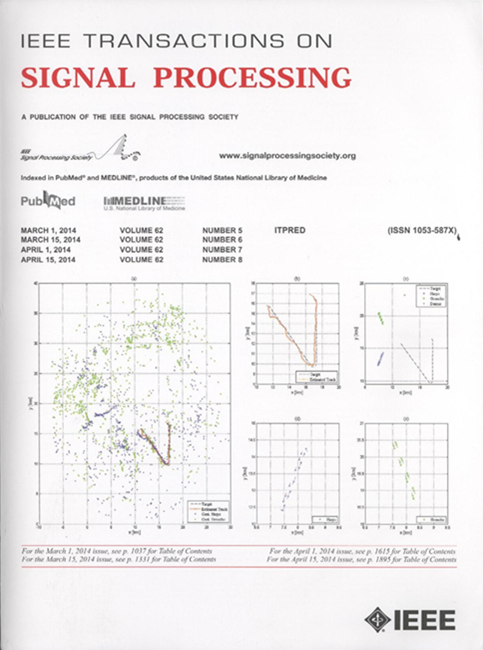DeepFRI: A Deep Plug-and-Play Technique for Finite-Rate-of-Innovation Signal Reconstruction
IF 5.8
2区 工程技术
Q1 ENGINEERING, ELECTRICAL & ELECTRONIC
引用次数: 0
Abstract
The finite-rate-of-innovation (FRI) sampling framework is a sample-efficient and power-efficient model for analog-to-digital conversion. It can be interpreted as a framework for performing continuous-domain sparse deconvolution starting from discrete measurements. The promise of the FRI framework is its ability to resolve time delays beyond conventional theoretical limits, while acquiring measurements at the rate of innovation. In the current state-of-the-art, application of the FRI framework to real-world problems is challenging due to its limited performance in the presence of noise. In this paper, we consider signal reconstruction in the Fourier domain and propose a new optimization formulation that solves for the Fourier coefficients. We employ the proximal gradient method, and analyze the role of the denoiser in a plug-and-play (PnP) setting. Within the proposed framework, it is sufficient for the denoiser to be Lipschitz continuous, thus motivating the application of a deep PnP denoising neural network with a continuous piecewise-linear architecture. Such a neural network is interpretable and possesses similar theoretical guarantees as model-based techniques, while obtaining superior performance in the estimation of signal parameters when the signal-to-noise ratio (SNR) is low. Since the technique is derived from an optimization algorithm, we use the ensemble strategy to combine the Cadzow denoiser, which is widely used in FRI problems, and the deep PnP denoiser in order to achieve perfect reconstruction in the high SNR regime. The resulting method is calledDeepFRI:一种用于有限创新率信号重建的深度即插即用技术
有限创新率(FRI)采样框架是一种采样效率高、功耗低的模数转换模型。它可以解释为从离散测量开始执行连续域稀疏反褶积的框架。FRI框架的前景是它能够解决超出传统理论极限的时间延迟,同时以创新的速度获得测量结果。在目前的技术水平下,由于FRI框架在存在噪声的情况下性能有限,因此将其应用于现实问题具有挑战性。在本文中,我们考虑信号在傅里叶域中的重构,并提出一个新的优化公式来求解傅里叶系数。我们采用近端梯度方法,并分析了即插即用(PnP)设置中的降噪器的作用。在提出的框架内,消噪器是Lipschitz连续的就足够了,从而激发了具有连续分段线性结构的深度PnP去噪神经网络的应用。这种神经网络具有可解释性,并且具有与基于模型的技术相似的理论保证,同时在信噪比较低的情况下,在信号参数估计方面具有优越的性能。由于该技术源自一种优化算法,因此我们采用集成策略将广泛用于FRI问题的Cadzow去噪与深度PnP去噪相结合,以便在高信噪比下实现完美的重构。由此产生的方法被称为DeepFRI。对于合成信号,与基准技术相比,该技术在低信噪比条件下的信号参数估计提高了一个数量级,而在高信噪比条件下的性能与基准技术相当。我们展示了一个应用到现实世界的超声信号,并表明所提出的技术提供了优越的重建性能相对于基准。
本文章由计算机程序翻译,如有差异,请以英文原文为准。
求助全文
约1分钟内获得全文
求助全文
来源期刊

IEEE Transactions on Signal Processing
工程技术-工程:电子与电气
CiteScore
11.20
自引率
9.30%
发文量
310
审稿时长
3.0 months
期刊介绍:
The IEEE Transactions on Signal Processing covers novel theory, algorithms, performance analyses and applications of techniques for the processing, understanding, learning, retrieval, mining, and extraction of information from signals. The term “signal” includes, among others, audio, video, speech, image, communication, geophysical, sonar, radar, medical and musical signals. Examples of topics of interest include, but are not limited to, information processing and the theory and application of filtering, coding, transmitting, estimating, detecting, analyzing, recognizing, synthesizing, recording, and reproducing signals.
 求助内容:
求助内容: 应助结果提醒方式:
应助结果提醒方式:


